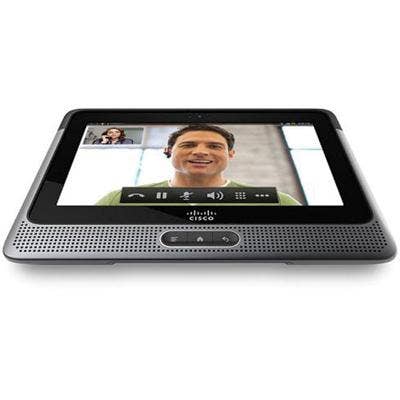11 Marketing Tips Every Solution Provider Should Know For 2011

Do You Understand Me?
Cisco's Partner Velocity event brought some 200 IT solution providers to Barcelona, for two and a half days of intensive workshops, marketing and social media discussion, and best practices. As the industry charges into 2011, it's time for solution providers to do a reality check on the strength of their marketing and the messages they're putting out to customers, and some of the industry's best-known marketing experts were on hand at Partner Velocity to give them the straight dope.
Here are 11 marketing tips every solution provider should know heading into the new year, culled from several Partner Velocity keynote sessions.

1. Ignore Video, Mobile and Social CRM At Your Peril
Savvy marketing means understanding how social networking platforms can aid your efforts, but it also means using video, mobile applications and social customer relationship management (CRM) to drive your marketing as well. Every potential area of customer interaction -- from a Web site landing page to a Twitter feed or a Facebook account -- is a place to influence the conversation about business.
"It's no longer enough to just have a Web site," said Luanne Tierney, vice president of worldwide channels marketing at Cisco. "It's about having a conversation with your customer."

2. Your Competition Is Everywhere
Marketing expert Scott McKain, author of All Business Is Show Business, What Customers Really Want and The Collapse of Distinction, reminded attendees that they go head to head every day with anyone who can offer as good a customer experience -- or better -- than they can.
"Your competition is not just HP," said McKain. "Your competition is Lexus. Your competition is Ritz Carlton. [Your competition] is any place delivering a customer experience with superiority and marketing with innovation."

3. Target Customer Needs, Not Selling Products
McKain noted that customers, from their businesses, want a compelling experience, reciprocal loyalty, differentiation, coordination, innovation, and a personal focus. What they most often get, however, is customer service, endless prospecting, sameness, confusion, a commitment to the status quo and a focus on products.
"[Businesses] focus more on what they have to sell as opposed to what we need as customers," he said.

4. Know What Destroys Differentiation
In his presentation, McKain cited three "destroyers of differentiation": habits that make a business indistinct and hardly innovative. Among those are copycat competition -- i.e. when a business improves incrementally on what's already out there, or merely imitates -- because it suggests the business is focused more on competition than the customer. The other two are tougher competitors -- a failure to heed competition from mediums like the Internet that weren't a factor decades ago -- and familiarity, which breeds complacency.
"The longer the client's [worked with you], the more likely that client will take you for granted," McKain said, urging attendees to make innovation a constantly revising process.
The four cornerstones of distinction, he said, are clarity, creativity, communication and a customer experience focus. And don't try to be all things to all people, McKain argued.

5. Know That Clarity Trumps Persuasion
Dr. Flint McLaughlin, director of MECLABS, a research consultancy firm devoted to Web marketing optimization, told attendees that most cannot express their value proposition in a single, clearly-stated sentence. That value proposition has to answer, firmly and directly, the question of why customers should buy from you versus your competitors.
The force of the value proposition, McLaughlin said, can be measured by three essential elements: appeal (how much is what you're offering desired by customers), exclusivity (is this offer or a better one available elsewhere) and credibility.

6. Understand What Makes You Credible
What builds credibility in a brand and a business, McLaughlin said, is how you pay attention to the messages you're putting out. Start by letting someone else do your bragging, telling only the verifiable truth in your marketing, and change general descriptions to specific facts. Then, he said, be sure to admit your weaknesses and also be careful not to refute your efforts with opposing elements of your Web site.
"Marketers don't often ask why because they're too often asking how," McLaughlin said.

7. Fine-Tune Your Web Site
"The power of the Web is its interactivity," McLaughlin told attendees. "We put up Web pages like they're magazine ads."
Having a strong Web site means more than just a visually sharp landing page, he explained. If a customer goes to a Web site and can't immediately identify what the business does and what value it can offer, the page is in trouble.

8. Retention Is The New Acquisition
Joseph Jaffe, Chief Interrupter at Powered, Inc. and the author of Flip the Funnel, among other titles, reminded attendees that there have never been as many ways to engage with customers as there are today, and what's getting lost in the shuffle is how to manage customer-to-business Web activity. With much competition for the interests and eyeballs of your customers, customer retention is the new acquisition -- keep your customers, and do that by making your customer service top notch.
"You might think the things you sell are so differentiated, but for the most part, they aren't," said Jaffe. "But you can differentiate them based on customer service. And if you aren't doing it, someone else is."

9. The Shopper Has More Control Now
If customers have many more ways to engage with businesses -- and also many more ways to find information -- that changes the role of marketing from convincing people to buy something to listening, and targeting directly, what the customer wants.
"People don't like to be sold to, but they sure like to buy," said Jaffe, quoting the old marketing maxim.

10. Don't Miss The Relationship Forest For Social Networking Trees
"The worst thing you can do on social networks is sell," said David Nour, founder and managing partner of The Nour Group and a specialist in business and social networking relationships. "The best thing you can do is listen, engage and influence."
Nour offered attendees five steps for building meaningful social networking relationships, with the caveat that "nothing will replace that three dimensional engagement" of interacting face-to-face, business person-to-customer.
First, he said, identify relevant stakeholders through LinkedIn and other tools. Then find where those stakeholders are getting their insights, followed by engaging those sources of insight with your unique value-add. Finally, deliver the best experience you can -- removing things that don't "wow" -- and attempt to influence best practices in the marketing community.

11. Make Yourself High-Touch
In a highly digital world, customers respond to high touch, and to deliver that, you have to unleash your "inner superhero," said Anders Sorman-Nilsson, creative director of Thinque and the author of Thinque Funky.
"Every individual has unique intelligence they need to harness, package and sell to the world," he said. That means ensuring your ideas are highly visual, leveraging the power of video, podcasts and webinars, and selling and marketing with passion and chutzpah.